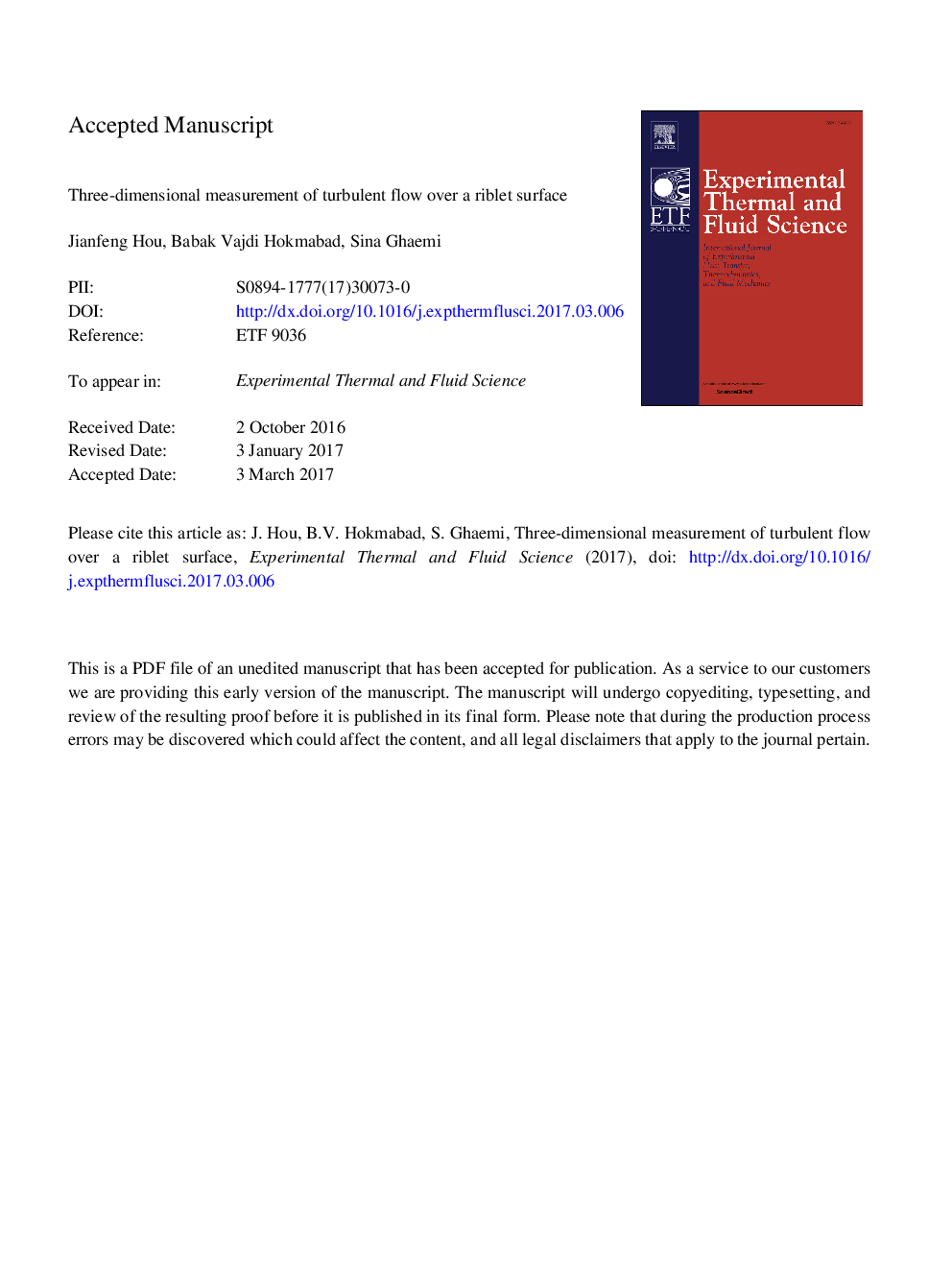| Article ID | Journal | Published Year | Pages | File Type |
|---|---|---|---|---|
| 4992667 | Experimental Thermal and Fluid Science | 2017 | 17 Pages |
Abstract
Measurement of three-dimensional (3D) turbulence over riblet surfaces is challenging due to the small size of the grooves and the requirement for measurement in the inner layer. The capability of two-dimensional (2D) and 3D particle image velocimetry (PIV) and particle tracking velocimetry (PTV) for characterization of the 3D structure of turbulent flow over a riblet surface with groove spacing of 750 μm at ReÏ = 147 (based on friction velocity and half channel height) is investigated. The 2D measurements were carried out using standard planar PIV and high-magnification long-range microscopic PTV (micro-PTV). The investigated 3D techniques include tomographic PIV (tomo-PIV) and 3D-PTV. The results are evaluated in comparison with measurement over a smooth surface and also with direct numerical simulation (DNS) of channel flow by Tsukahara et al. (2005) at ReÏ = 150. The reflection of the laser light from the smooth and riblet surfaces is significantly different in spite of the wall-parallel illumination. This resulted in biased near-wall (y/H < 0.05) measurement using planar PIV. The shortcoming was fulfilled by micro-PTV which could measure the mean velocity profile within the linear viscous sublayer (2 < y+ < 5) and showed a 6.1% reduction of the skin-friction over the riblet surface. Micro-PTV also accurately measured the location of the ãu2ã peak and its magnitude reduction over the riblet surface compared with planar PIV. The Planar PIV measured ãv2ã peak which is further away from the wall at y/H = 0.15 and also the ãuvã profile in the outer layer. The ãuvã profile showed 7.4% reduction of wall shear stress over the riblet surface. 3D-PTV showed a 9.4% reduction of the ãw2ã peak and attenuation of v and w fluctuations over the riblet surface compared to the smooth surface through quadrant analysis. The three components of fluctuating vorticity measured by tomo-PIV showed negligible variation over the two surfaces due to the random noise and lack of spatial resolution. Quadrant analysis using planar PIV showed attenuation of the sweep and ejection events near the riblets, which indicates weaker streamwise vortices. Two-point correlation of PIV measurement also demonstrated increase of the coherence of the low and high-speed steaks over the riblets.
Related Topics
Physical Sciences and Engineering
Chemical Engineering
Fluid Flow and Transfer Processes
Authors
Jianfeng Hou, Babak Vajdi Hokmabad, Sina Ghaemi,
